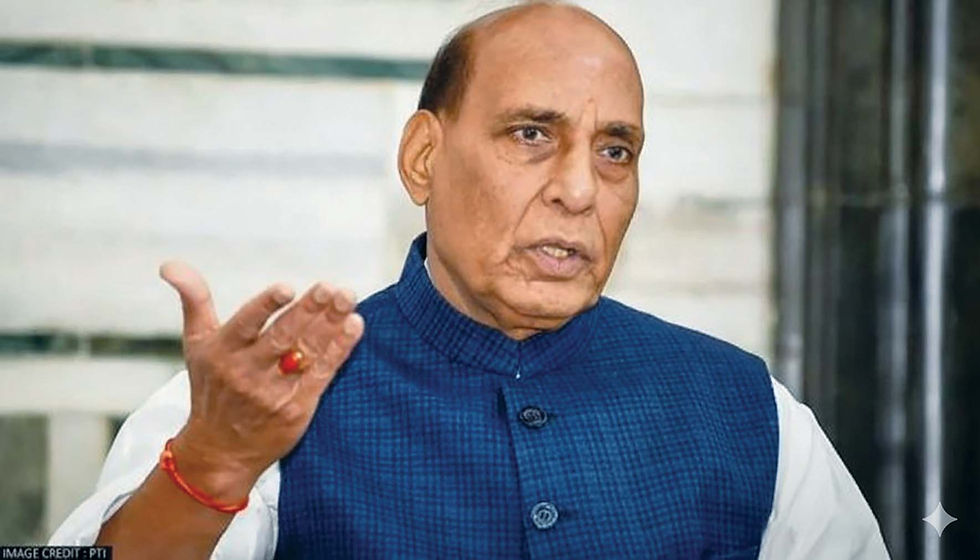Know Thy Enemy: Why India Cannot Afford to Underestimate Pakistan’s Armed Forces
- Commodore S.L. Deshmukh

- May 5
- 4 min read
In the wake of the Pahalgam killings, India’s thirst for retribution must be tempered with a cold-eyed assessment of Pakistan’s growing military prowess.

As geopolitical tensions ratchet across the subcontinent in the wake of the Pahalgam massacre, it is imperative that India maintains a clear and unflinching understanding of Pakistan. For all its internal turmoil and economic fragility, Pakistan has quietly built one of the most formidable military arsenals in the region, complete with nuclear weapons, modern delivery systems, a powerful intelligence apparatus, and an evolving asymmetric warfare doctrine.
Pakistan’s armed forces remain a highly structured and potent organisation, encompassing not just the traditional tri-services (Army, Navy and Air Force) but also a formidable intelligence network, paramilitary units, and nuclear command structures. While Pakistan’s GDP and overall defence budget pale in comparison to India’s, Islamabad has consistently prioritised military modernisation, particularly in domains where asymmetric or technological advantages could offset India’s conventional superiority.
The Pakistan Air Force (PAF) exemplifies this dual approach of maintaining traditional strength while embracing new tools. It operates a versatile fleet of transport aircraft like the Lockheed C-130 Hercules and Gulfstream IV-SPs, in addition to Chinese-made Harbin Y-12s and Brazilian Embraer jets. Its four Il-78MP aerial refuelling tankers, acquired from Ukraine, extend the operational reach of its fighter jets—many of which are co-produced with China under the JF-17 Thunder programme. PAF’s trainer aircraft fleet, ranging from PAC MFI-17 Mushshaks to Hongdu JL-K8s, ensures a continuous pipeline of skilled pilots. The Sherdils aerobatic team, while symbolic, is a signal of both morale and operational readiness.
Modern warfare is increasingly shaped by unmanned systems and surveillance capabilities. Here too, Pakistan has made deep investments. A combination of domestically produced Shahpar UAVs and imported Turkish Bayraktar TB2 and Akinci drones, alongside Chinese Wing Loong IIs, gives the country real-time reconnaissance and precision-strike capabilities. The use of UAVs has proven decisive in recent conflicts across the globe and Pakistan appears to have learnt these lessons well.
Air defence is another domain where Pakistan’s strategic acquisitions stand out. Systems such as the MBDA Spada 2000 and China’s HQ-9B long-range air defence missiles provide a credible umbrella, complicating the calculus of any air incursion. The deployment of Crotale variants and even retrofitted armoured vehicles like the AML HE 60-20 for base security signals a layered, decentralised defence strategy.
But military power in Pakistan cannot be analysed without understanding the centrality of the Inter-Services Intelligence (ISI). Often dubbed the state’s ‘fourth service,’ the ISI wields influence well beyond the remit of traditional intelligence agencies. Staffed largely by military officers and headed by a three-star general reporting directly to both the Prime Minister and Chief of Army Staff, the ISI has long been accused by Indian and international agencies of fuelling cross-border terrorism, aiding proxy groups and orchestrating hybrid warfare.
Pakistan’s nuclear arsenal casts a long shadow over any potential escalation. With an estimated 170 warheads and projections suggesting it could rise to 250 by 2025, Pakistan has deliberately pursued both strategic and tactical nuclear capabilities. Its missiles range from short-range battlefield systems to longer-range medium-range ballistic missiles. Crucially, unlike India, Pakistan does not adhere to a ‘No First Use’ policy, keeping the option of pre-emptive nuclear strike on the table. Its Strategic Plans Division (SPD) oversees this arsenal with stringent command-and-control protocols, making it not just a symbolic deterrent but a credible operational threat.
Pakistan’s paramilitary units and maritime agencies complement its traditional forces with flexible roles in law enforcement, counterterrorism, and coastal security. The Pakistan Coast Guards and the Maritime Security Agency, under the operational control of the Army and Navy respectively, perform overlapping tasks from anti-smuggling operations to maritime domain awareness. On land, the Pakistan Rangers and Civil Armed Forces play a dual role in border defence and internal security making them crucial in grey-zone warfare and hybrid operations.
It is tempting for Indian public discourse to dismiss Pakistan’s military might as posturing from a failing state. But despite persistent political instability, Pakistan’s armed forces continue to function as a professional and well-integrated institution with real teeth. Pakistan’s military has cultivated deeper ties with China and Turkey, both willing suppliers of cutting-edge military technology. Meanwhile, it has modernised selectively, emphasising mobility, precision and disruption over brute force.
To paraphrase the ancient Chinese strategist Sun Tzu, knowing oneself is half the battle. Knowing the enemy, especially one as opaque and versatile as Pakistan’s military-industrial complex, is the other half. India must resist the temptation to respond emotionally to provocations like Pahalgam. A hot-headed response, no matter how righteous, can escalate into a conflict with unpredictable consequences, particularly when nuclear weapons and non-state actors are both in play.
The current political moment demands more than bellicose rhetoric. It requires cold realism, strategic patience, and sustained investment in intelligence, surveillance, cyber capabilities and next-generation warfare. A hundred battles can be won but only by those who refuse to underestimate the enemy.
(The author is a former naval aviation officer and geopolitical analyst. Views personal.)





Comments